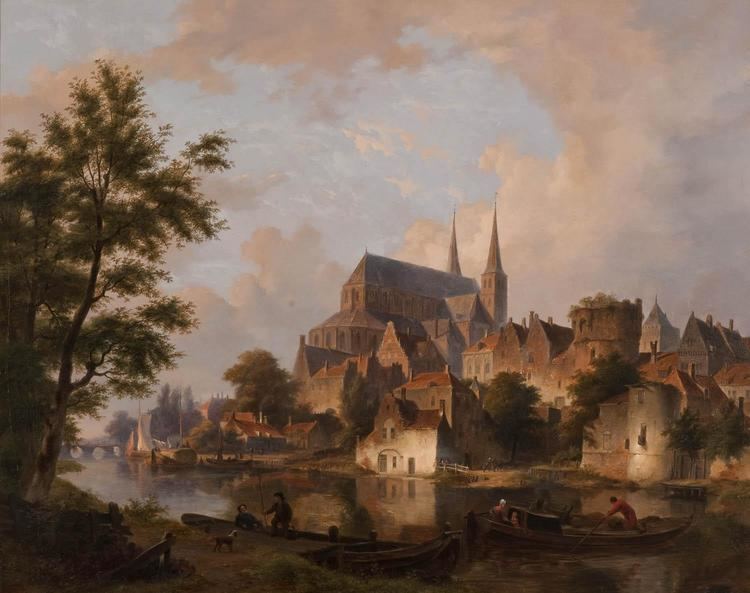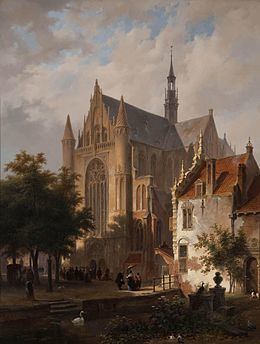Name Bartholomeus Hove | Children Hubertus van Hove | |
 | ||
Died November 8, 1880, The Hague, Netherlands | ||
Johannes Bosboom: A collection of 108 works (HD)
Bartholomeus Johannes van Hove (October 28, 1790 in The Hague – November 8, 1880 in The Hague) was a Dutch painter and the father of Hubertus van Hove. He played an important role in the development of 19th-century painting by his many disciples. He was able to teach his skills to a large group of artists, of whom especially Johannes Bosboom and Jan Hendrik Weissenbruch would rise to great heights.
Contents
- Johannes Bosboom A collection of 108 works HD
- Bartholomeus van Hove 1790 1880 54 paintings
- Biography
- Style
- References

Bartholomeus van Hove (1790-1880): 54 paintings
Biography

Van Hove was a pupil of his father, Hubertus van Hove the Elder and the theater painter JHAA Breckenheijmer, and was appointed headmaster in 1820 at the Hague Academy Teeken. In that capacity he became the teacher of Carel Jacobus Behr, Petrus Augustus Beretta, Pieter Gerardus Bernhard, Johannes Bosboom, Cornelis de Cocq, Johannes Josephus Destree, Lambertus Hardenberg, his son Huib van Hove, Johannes van Hove, Herman Gijsbert Keppel Hesselink, Everhardus Koster, Charles Leickert, Maurits Leon, Ferdinand Carl Sierich, Johannes Anthonie Balthasar Stroebel, Willem Troost, Petrus Gerardus Vertin, Salomon Verveer, Lodewijk Anthony Vintcent, Hendricus Stephanus Johannes van Weerden, Jan Hendrik Weissenbruch, Cornelis Westerbeek, and Salomon van Witsen.

In 1823 he was commissioned by the War Department to illustrate the variety of Dutch army uniforms in a series of pen drawings. Van Hove was also a decorative artist and in 1829 he succeeded his teacher JHAA Breckenheijmer as a stage painter at the Hague Theatre.
In the painting world of The Hague he was a public figure and in 1847 he was one of the founders of the Pulchri Studio. He also became the first president of this group, a position he held until 1851. He was also a member of the Amsterdam-based Arti et Amicitiae, of which he became honorary chairman in 1874.
Style
Except for stage scenery, Van Hove painted mostly cityscapes and church interiors in a romantic style. His early works are characterized by a fine, detailed painting style, which strongly contrasts with the broad, colorful stage sets. His cityscapes and church interiors were often decorated with figures, sometimes done by his son Huib. His later cityscapes are looser and smoother in tone with a tailored gray coloration.
